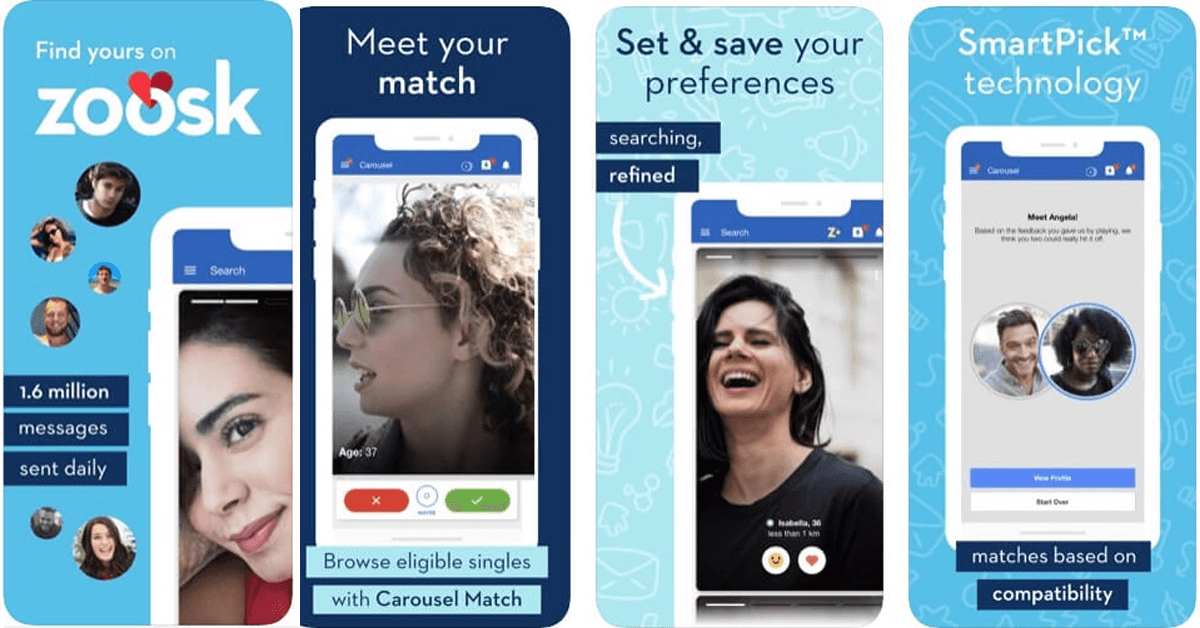What Is The Male-to-female Ratio On Dating Sites?
Curious about the number of male users on online dating sites compared to that of female users? Let’s crunch the numbers and find out the male-to-female ratio on online dating sites.
In the digital age of romance, online dating sites and dating apps have become a go-to platform for people to connect with potential partners.
But have you ever wondered about the gender balance in this virtual dating landscape? The fascinating world of online dating sites holds the answer to the question: What is the male-to-female ratio on online dating sites?
Understanding this sex ratio is crucial for anyone navigating the online dating scene. It can impact your chances of finding a match, the dynamics of interactions, and even the types of real or fake profiles you encounter.
From online dating apps like Tinder and Bumble to specialized niche online dating sites, we'll explore how gender ratios vary across different online dating sites and demographics. So, whether you're new to online dating or a seasoned digital dater, join us as we uncover the insights behind the male-to-female ratio on online dating sites.
What Is The Male-to-female Ratio On Dating Apps?
When you use an online dating app, one of the first things you might notice is that there seem to be more people of one gender than the other. This balance between males and females on online dating apps is called the "male-to-female ratio." Understanding the gender ratio is important because it can affect your experience on the app.
1. Variations Across Apps
Different online dating apps often have different men-to-women ratios. Some dating apps may have more men than women, while others could have more women than men. This can happen because of the app's popularity, its target audience, or how it's designed.
For example, some online dating apps may appeal more to single women, leading to a higher female user count, while others may attract more men.
2. Impact On Your Experience
The male-to-female ratios can influence your dating app experience in several ways:
A. Competition
In dating apps like Tinder, with more Tinder users of your preferred gender, you may face more competition when trying to match with someone. This means you might need to put in extra effort to stand out.
B. Matching Opportunities
On the flip side, popular apps with the most users of the opposite gender can provide more opportunities for matching, but it might be harder to get noticed.
C. Interactions
The gender ratio can also impact how people behave on the app. In dating apps with an imbalance, some users might become more selective, while others may be more open to matches.
3. Demographics Matter
The male-to-female ratio can also vary based on where you live and your age group. In some regions or age brackets, there may be more single men or women, and this can affect your chances of finding a match.
4. Finding the Right Balance
When using online dating apps, it's essential to keep the gender ratio in mind, but it's not the only factor to consider. It's also crucial to think about what you're looking for in a potential partner and the type of connection you want.
Different dating apps cater to different needs, so exploring a few and understanding their user demographics can help you find the right balance. Consequently, it helps improve your chances of finding meaningful connections online.
What Is The Guy-To-Girl Ratio On Hinge?
Hinge, one of the most popular dating apps, has its own unique gender ratio that's worth exploring. When it comes to Hinge users, there are more guys than girls on the online dating site. Specifically, the gender ratio is approximately 64% guys to 34% girls.
This means that if you're a guy using Hinge, you might face more competition because there are more male users. On the flip side, if you're a girl, you might have more options to choose from.
That said, it's important to keep in mind that these male-to-female ratios can vary by location and change over time as more people join the app.
What Is The Male-To-Female Ratio On Bumble?
Like Hinge, Bumble has significantly more male users than female users. To be precise, the gender ratio is 72.9% male to 27.1% female users.
Similarly, male Bumble users might find it a little difficult to find matches because there are more men than women on the online dating site. For most women, this male-to-female ratio could work in your favor, as you might have more matches on average.
How Many Matches Do Men Get On Dating Sites?
When it comes to online dating, you might be curious about how many matches men typically get on online dating sites. Well, the numbers might surprise you. Generally, online dating statistics show that men tend to receive fewer matches compared to women.
On average, women often get more matches, messages, and attention from potential partners.
This difference in match rates can be attributed to several factors.
1. Gender Imbalance
Online dating site gender ratios typically lean more toward men than women. This imbalance can make it tougher for men to stand out and get noticed.
2. Swiping Behavior
Research suggests that women are more selective in their swiping habits, while men tend to swipe right more frequently. This means women may match with a smaller percentage of their swipes, while men match with fewer of their choices, which can be deal breakers for them.
3. Competition
Due to the higher number of men on these online dating sites, they face stiffer competition. With more men vying for attention, it can be challenging for any single man to secure numerous matches.
While these trends are noticeable, it's important to remember that individual experiences can vary widely. Success in online dating depends on various factors, including your profile, communication skills, and the specific online dating apps or sites you use.
To Sum Up
The male-to-female ratio on online dating sites is a crucial factor that can significantly impact your online dating experience.
This ratio varies across different dating apps, with some platforms having more men and others more women. The balance can affect the level of competition you face, the number of matching opportunities, and even how people behave on the dating app.
Moreover, the male-to-female ratio isn't uniform worldwide; it varies by location and average age group, influencing your chances of finding a match. When using dating apps, it's essential to consider this ratio, but also keep in mind your personal preferences and what you're seeking in a potential partner.













